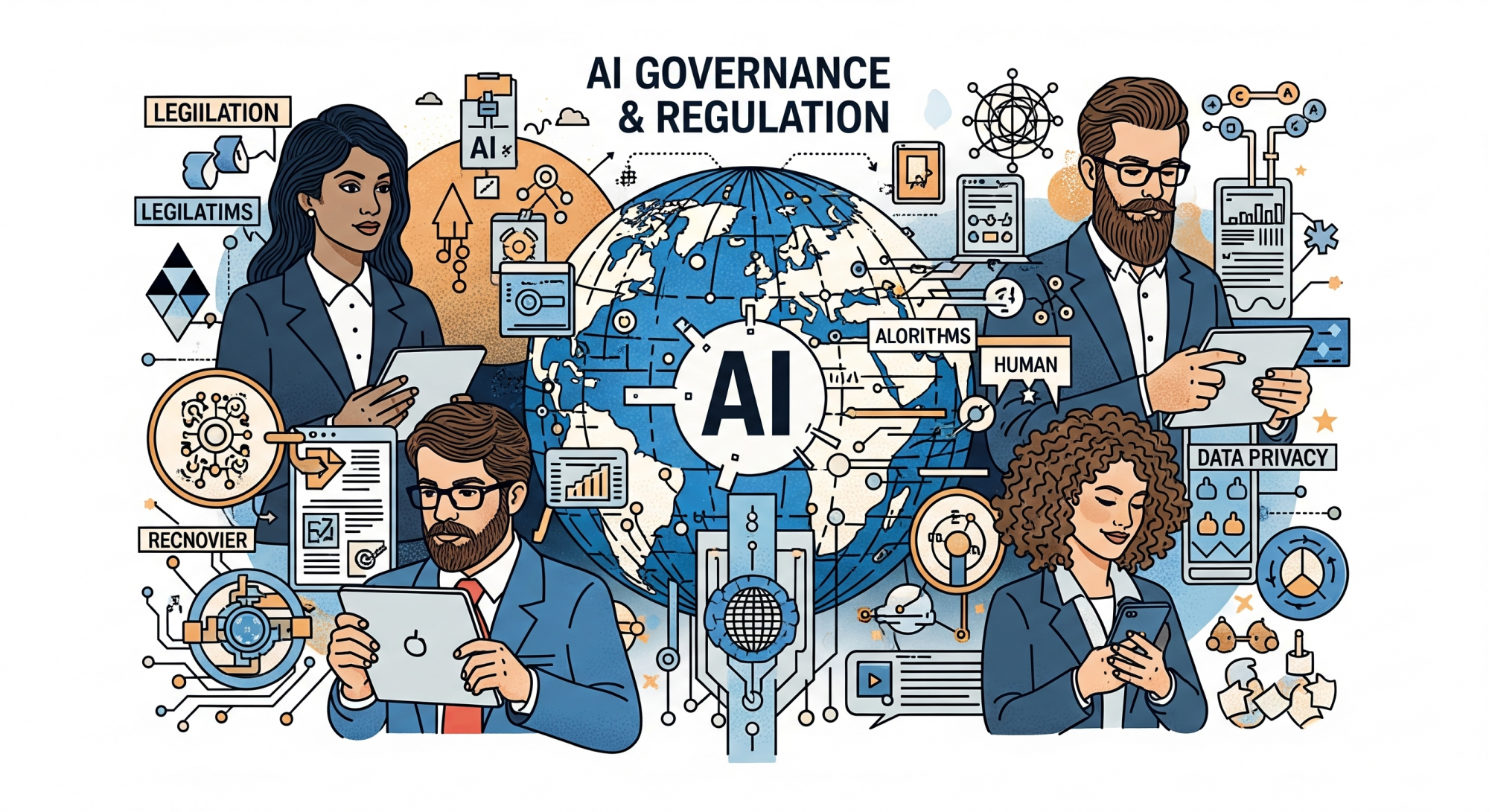In the constantly changing world of artificial intelligence, strong regulation and governance has become crucial. Like a fast river that keeps flowing, AI technology advances outpace our ability to manage wisely. Governments and institutions globally grapple with creating regulations protecting the public while encouraging innovation. This balancing act leads to heated discussions about AI governance’s future.This article dives into key issues surrounding AI regulation, discusses need for global governance organization, and examines balancing innovation with public safety.
Continual Evolution of AI Technology
Rapid AI development poses significant challenges for rule-makers. Unlike traditional industries adapting regulations slowly over time, AI technologies change quickly, creating gaps in existing laws. As experts note,
“Governments need to act swiftly and decisively to set up effective regulations, or they risk falling behind the technological curve.”
This quest for timely regulations raises important questions about public and private sector roles and responsibilities.As AI systems become intricate, understanding their societal effects grows complicated. Thus, regulatory approaches must adjust and progress alongside technological advancements, considering various issues arising as AI becomes part of everyday life.
Global Governance Body Debate
Amid national regulation challenges, a pressing question arises: Should we have a global governance body for AI? Supporters argue unified approach could create universal safety, ethics, and accountability standards. Like rivers flowing around borders, technology knows no boundaries, leading experts to believe global agency might be necessary for cohesive rules encouraging collaboration and preventing misuse.Critics warn against one-size-fits-all approaches, reminding us different cultures and economies may require customized solutions. Regulations designed for highly industrialized nations might not fit developing countries’ needs. Balancing global governance with local needs remains ongoing debate.
Innovation vs. Public Safety
The struggle between fostering innovation and ensuring public safety is at AI regulation’s heart. Excessive regulations could stifle creativity and slow technological progress, leading to missed opportunities. Conversely, weak regulations might lead to harmful consequences where AI effects extend beyond intentions.Finding the best regulatory framework requires diverse stakeholder input, including technologists, ethicists, and policymakers. Collaborative efforts can create regulations protecting the public while inspiring innovation and growth.
Industry Collaboration Role
To navigate intricate AI governance, teamwork between industry leaders, governments, and communities is vital. By joining forces, Companies pool resources, knowledge, and best practices, developing ethical, safe, and innovative AI solutions.Several initiatives have started addressing regulatory challenges tied to AI. Projects led by tech giants and universities are designing frameworks to share insights on AI ethics and governance, paving way for balanced partnerships moving forward.
Ethical Considerations
Ethics must be at regulatory framework forefront surrounding AI. Given technology’s potential to dramatically impact lives, AI systems must honor human rights, promote fairness, and avoid bias. Experts stress making ethical considerations priority during design and implementation phases.
“Without a strong ethical foundation, AI can perpetuate societal inequalities,” warns a leading ethicist.
This highlights urgency of weaving ethical standards into governance frameworks to maintain public trust and encourage responsible innovation.
Future Directions: Collaborative Approach
Looking ahead, AI regulation’s future relies on cooperation among all stakeholders. Technological advancement complexity and speed demand flexible, adaptive regulatory approach evolving alongside AI technologies.Joint efforts between governments, industries, and communities can create shared vision prioritizing safety, innovation, and accountability. To manage AI’s risks and opportunities, complete governance enabling informed future decisions is essential.
Conclusion: Navigating Regulatory Landscape
Considering AI regulation and governance challenges, several key lessons emerge. Unified global approach may offer hope but must account for local contexts and individual needs. Balancing innovation and safety requires collaborative strategies involving public, private, and academic sectors together.Establishing effective AI governance necessitates thoughtful consideration, ongoing dialogue, and willingness to adapt. As we embark on this journey, ensuring all stakeholders actively contribute to shaping AI’s future benefits society while safeguarding safety and ethical principles. Only through united efforts can we harness AI’s potential while protecting public interest.
Policy Resources
